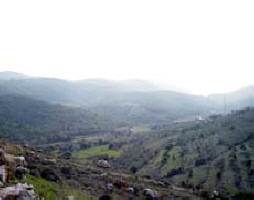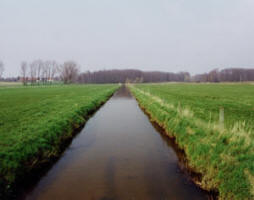 Twelfth Session of Working Group I (WGI) of the Intergovernmental Panel on Climate Change (IPCC) and Thirty-sixth Session of the IPCC
Twelfth Session of Working Group I (WGI) of the Intergovernmental Panel on Climate Change (IPCC) and Thirty-sixth Session of the IPCC
Twelfth Session of Working Group I (WGI) of the Intergovernmental Panel on Climate Change (IPCC) and Thirty-sixth Session of the IPCC
23-26 September 2013 | Stockholm, Sweden
http://www.iisd.ca/climate/ipcc36/
The 12th session of Working Group I (WGI) of the Intergovernmental Panel on Climate Change (IPCC) and the 36th session of the IPCC were held from 23-26 September 2013 in Stockholm, Sweden. The meeting was attended by more than 400 participants, including representatives from governments, the United Nations, and intergovernmental and observer organizations, and drew worldwide media attention.
The WGI session focused on finalizing its contribution to the Fifth Assessment Report (AR5). The process to prepare the AR5 was launched by the IPCC in 2008. The WGI contribution is the first in the series of four reports with the WGII assessment on impacts, adaptation and vulnerability scheduled for finalization in March 2014; the WGIII contribution on options for mitigating climate change to be finalized in April 2014, and the AR5 Synthesis Report to be completed in October 2014.
During the four-day meeting, delegates met in plenary, informally and in contact groups to consider the WGI contribution to the IPCC AR5 titled, “Climate Change 2013: The Physical Science Basis.” Delegates were assisted by short informal presentations by the Coordinating Lead Authors (CLAs) on various sections and topics of the Summary for Policymakers (SPM). At the end of the meeting, WGI approved the SPM and accepted the underlying report including the Technical Summary and annexes.
Subsequently, the IPCC convened to formally adopt the work by WGI. The approved SPM can be found on the IPCC website http://ipcc.ch.
The Summary of this meeting is now available in PDF format
at http://www.iisd.ca/download/pdf/enb12581e.pdf and in HTML format at
http://www.iisd.ca/vol12/enb12581e.html
A BRIEF ANALYSIS OF THE IPCC MEETINGS
NORDIC SUNRISE: THE IPCC’S STOCKHOLM MEETING
In the dim light of the Nordic morning, in a picturesque post-industrial location in central Stockholm, the IPCC adopted the latest findings on the science of climate change. Over four days and nights, the overview of these conclusions—the Summary for Policymakers—had been subject to intense line-by-line discussion by representatives of 116 governments present in Stockholm. The WGI contribution is the first in a series of four that will comprise the Fifth Assessment Report. The other three are the WGII assessment on impacts, adaptation and vulnerability (scheduled for endorsement in March 2014), the WGIII contribution on options for mitigating climate change (April 2014), and the Synthesis Report (October 2014). The Fifth Assessment Report will provide the scientific basis for future global climate policy, including the new agreement that is supposed to be adopted by parties to the UNFCCC in 2015.
This brief analysis summarizes the main findings of the report, reflects on the SPM approval process, and places the meeting in the larger context of evolving global climate policy.
THE LATEST IN CLIMATE SCIENCE: HALFWAY THROUGH THE “CARBON BUDGET”?
During the press conference at the end of the meeting, UN Secretary-General Ban Ki-moon described the WGI report as “the world’s best science for the world’s biggest challenge.” While reactions to the WGI report were mixed and some commented that “the AR5 doesn’t pack the same punch as the AR4,” several key messages in the report stand out due to stronger scientific evidence, increased certainty and/or new findings.
It is now clearer than ever that human influence is affecting the climate system, with the certainty of anthropogenic climate change increased from 90% in the AR4 to 95% in the AR5. Atmospheric concentrations of CO2, methane and nitrous oxide have increased to “unprecedented” levels in at least the last 800,000 years. CO2 concentrations have increased by 40% since pre-industrial times and this was primarily due to fossil fuel emissions and secondarily due to net land use change emissions.
The WGI report also reflects on: major changes in the Arctic and Antarctic, including on an ice-free Arctic in the summer; increased weather and climate extreme events; ocean acidification; and more scientifically robust, higher projections of sea level rise compared to AR4.
The WGI report is based on a new type of scenarios of future anthropogenic emissions called Representative Concentration Pathways (RCPs), which include a mitigation scenario leading to a very low climate forcing, two stabilization scenarios and one scenario with very high GHG emissions. The Summary for Policymakers thus contains clearer, more policy relevant information on what will happen under difference climate policy choices. Importantly, the report also provides information on temperature implications of cumulative total CO2 emissions. Limiting the warming to less than 2°C can be achieved, with a probability level of 66%, if maximum cumulative CO2 emissions do not exceed 1000 GtC. According to the Panel, 531 GtC was already emitted by 2011. This means that the remaining “carbon budget” for the world is limited to 469 GtC.
The Summary for Policymakers also incorporates, for the first time, information on, inter alia, paleoclimate reconstruction studies, geoengineering, and an emissions-based perspective on drivers of climate change.
Summarizing the report’s main message, UNEP Executive Director Achim Steiner stated in the concluding press conference, “You may not know everything, but you will know enough about the risks of not acting.”
COMMUNICATING CLIMATE SCIENCE BY MORE THAN A HUNDRED STATES
Reaching agreement on any report with so many cooks in the kitchen is not an easy task, especially if the text is filled with complex technical information and reviewed line-by-line by an intergovernmental body in a plenary setting. Yet, the mood was highly constructive, with genuine will to describe the big picture of global climate change to policymakers in a clear and readable report. However, some political disagreements did surface during these discussions with Saudi Arabia trying to mute the tone of the scientific findings by tirelessly stressing uncertainties throughout the meeting. There were other clear linkages to the ongoing UNFCCC negotiations in the discussions, for instance on: what period can be referred to as “pre-industrial,” how to describe the qualities of such metrics as Global Warming Potential and Global Temperature Potential, and how to address the implications of RCP scenarios in the context of staying below 2°C of warming or a lower warming target.
The allegations of climate skeptics of a global warming slowdown in the popular media had some bearing on the emphasis placed on communicating the messages of the SPM. Many delegations highlighted the possibility of climate skeptics misrepresenting, or “cynically” taking sentences out of context. This in turn led to extra-careful deliberations and some time-consuming wordsmithing around the key findings. Delegates debated at length to find the clearest language possible to explain that a claimed “15-year hiatus” is based on a single variable (global mean surface temperature), too short a period of observation for climatic significance, and sensitive to the choice of the starting year from which a 15-year period is calculated.
The IPCC entered its final stage of the Fifth Assessment with quite a few internal changes. In the last three years the Panel has responded to the recommendations from the independent review by the InterAcademy Council, which was launched in the aftermath of controversies surrounding the Fourth Assessment Report and introduced significant changes to its governance and procedures. A question thus arises as to how the recent reforms of the IPCC affected the meeting’s approval of the first part of the AR5. The reforms have made the IPCC a stronger and more solid institution, with a more robust review process and more consistent language on uncertainties. It seems evident that the Panel became more transparent and responsive in the run up to the Stockholm meeting. The communications have also been strengthened with a new communications unit, a related strategy, and media trainings for authors. Other changes, including a procedure to address possible errors in the assessment, will, however, have to withstand the test of time with much scrutiny and a plethora of questions to come.
SETTING THE STAGE FOR A PARIS AGREEMENT?
With less than two months to go before UNFCCC COP 19 opens in Warsaw, and the UN Secretary-General planning to host a Climate Summit with world leaders in September 2014, the WGI contribution to AR5 is well-timed to influence global climate policy. The SPM and the WGI report provides the much needed scientific guidance to climate negotiators both in the international negotiations and in domestic contexts.
Seasoned negotiators remember how the AR4 re-energized the UNFCCC climate negotiations in 2006 and 2007. Given the increased levels of certainty regarding human-induced global warming (from 90 to 95%), more robust projections on sea-level rise and data on melting of ice sheets, and the “carbon budget” for staying below the 2°C target, the WGI conclusions together with other AR5 component reports are likely to put more pressure on the UNFCCC parties to deliver by 2015 an ambitious agreement that is capable of preventing dangerous anthropogenic interference with the climate system.
This analysis, taken from the summary issue of the Earth Negotiations Bulletin © enb@iisd.org, is written and edited by Elena Kosolapova, Ph.D., Leila Mead, Antto Vihma, Ph.D., Ingrid Visseren-Hamakers, Ph.D. and Yulia Yamineva, Ph.D. The Editor is Pamela Chasek, Ph.D. <pam@iisd.org>. The Director of IISD Reporting Services is Langston James “Kimo” Goree VI <kimo@iisd.org>. The Sustaining Donor of the Bulletin is the European Commission (DG-ENV). General Support for the Bulletin during 2013 is provided by the German Federal Ministry for the Environment, Nature Conservation and Nuclear Safety (BMU), the Ministry of Environment of Sweden, the New Zealand Ministry of Foreign Affairs and Trade, SWAN International, the Swiss Federal Office for the Environment (FOEN), the Finnish Ministry for Foreign Affairs, the Japanese Ministry of Environment (through the Institute for Global Environmental Strategies - IGES), and the United Nations Environment Programme (UNEP). Funding for translation of the Bulletin into French has been provided by the Government of France, the Wallonia, Québec, and the International Organization of La Francophonie/Institute for Sustainable Development of La Francophonie (IOF/IFDD). The opinions expressed in the Bulletin are those of the authors and do not necessarily reflect the views of IISD or other donors. Excerpts from the Bulletin may be used in non-commercial publications with appropriate academic citation. For information on the Bulletin, including requests to provide reporting services, contact the Director of IISD Reporting Services at <kimo@iisd.org>, +1-646-536-7556 or 300 East 56th St., 11D, New York, NY 10022 USA.
| Contact information | n/a |
|---|---|
| News type | Inbrief |
| File link |
http://ipcc.ch |
| Source of information | IISD |
| Keyword(s) | climate change |
| Subject(s) | RISKS AND CLIMATOLOGY |
| Relation | http://www.iisd.ca/download/pdf/enb12581e.pdf |
| Geographical coverage | Sweden |
| News date | 30/09/2013 |
| Working language(s) | ENGLISH |
 you are not logged in
you are not logged in





